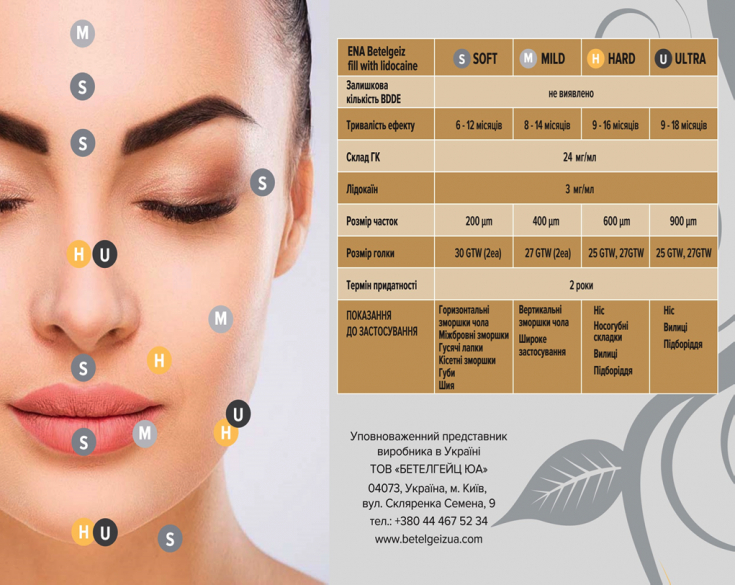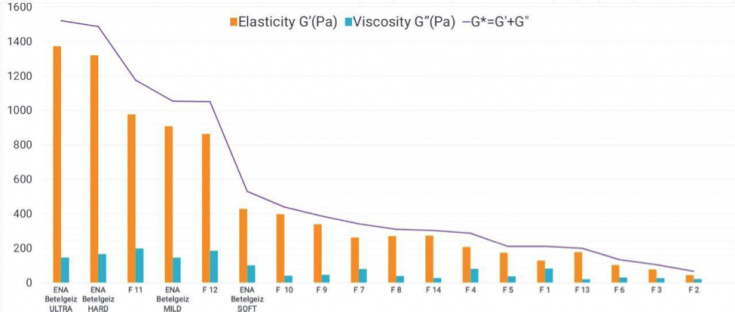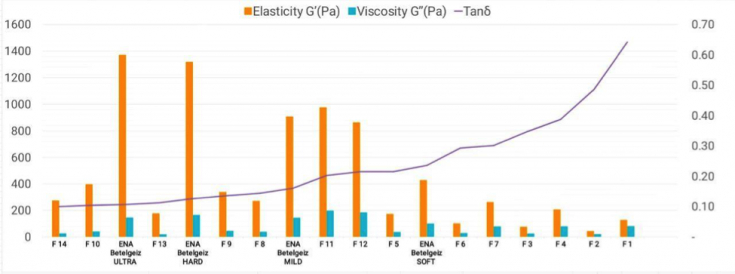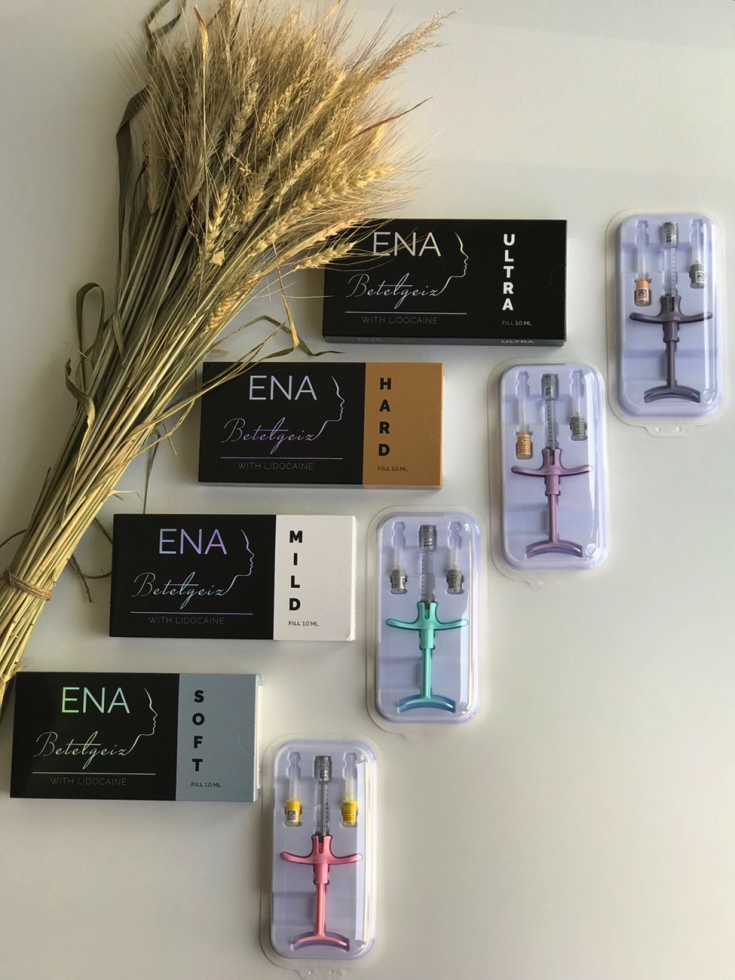The availability of a wide arsenal of methods for skin restoration with involutive changes makes it possible to choose them taking into account the advantages and disadvantages, as well as take into account the cause and individuality of aggravating factors in a particular clinical case. The introduction of various techniques and methods for correcting age-related changes in the skin of the face has led to a significant expansion of the contingent of women applying to specialized clinics.
But how to choose the right dermal filler, what characteristics of hyaluronic acid fillers should be considered? Read more about this in the article on estet-portal.com
- mechanism of action of hyaluronic acid fillers
- rheological properties of hyaluronic acid fillers
- selection of a dermal filler for a specific area of the face
Mechanism of action of hyaluronic acid fillers
Today, hyaluronic acid-based fillers are an integral part of the management of patients with involutional skin changes.
Follow us on Instagram!
The mechanism of action of these drugs is well known — it has been proven that the skin contains a significant amount of hyaluronate, which determines not only the structure, but also the properties and the functioning of the skin.
Hyaluronic acid contributes to the physical stabilization of the skin framework, stimulates cell migration, and controls fibrin degradation. An analysis of the literature data shows that it is hyaluronic acid that plays an important role in the processes of tissue repair. It stabilizes the coagulation matrix and regulates its dehydration, provides tissue lifting and stimulates cell renewal, which are associated with inflammatory processes in the skin, and chronic inflammation is known to be one of the main factors of aging.
Choice of drug and protocol for lip contour and volume correction
Hyaluronic acid plays an important role in the regulation of the recovery potential of fibroblasts, and, consequently, the synthesis of fibrous structures ˗ collagen and elastin fibers, which ensures the process of neocollagenesis.
But the question remains open: what properties of hyaluronic based fillers can provide all these effects?
Rheological properties of hyaluronic acid fillers
The face is a complex highly mobile structure. Any dermal filler injected into the facial tissues is subjected to a combination of effects, namely, lateral shear, stretching and compression, both of external origin and from anatomical structures.
Internal influences – this is the pressure of the tendons, the movement relative to the bones of the muscles covering them, adipose tissue and skin.
In each anatomical plane, the filler is subjected to a characteristic combination of forces that differ in intensity and frequency of occurrence. External influences include compression, stretching and shearing of tissues in various everyday situations, when the patient, for example, sleeps on a pillow, eats or kisses.
What is the most important thing for the doctor and the patient when using fillers:
- Ease of administration ˗ The drug exits the syringe easily and evenly, thus achieving an accurate, proportional and symmetrical correction in the required volume.
- Obtaining the result that the patient expects, avoiding adverse consequences ˗ complications after the injection of the filler, migration of the drug, loss of volumes.
- Duration of the correction effect, in accordance with the stated terms, no need for additional correction.
Follow our news on Facebook!
To achieve these results, the physician, when choosing a filler for correction, should take into account the the following rheological properties:
- elasticity ˗ ensures sufficient duration of the volumizing effect;
- flexibility ˗ allows easy injection of the drug through a needle or cannula with a syringe;
- high cohesiveness ˗ contributes to the long-term preservation of the vertical projection of the filler, despite the vertical (compressive) loads from the soft tissues; average values of cohesiveness provide a balance between the lifting ability of the gel and the ease of its distribution / modeling; low cohesiveness greatly facilitates modeling and distribution, it allows the filler to be distributed in a thin, even layer when superficially injected.

Innovative patented Hyper-cross-linking stitching technology, which is used in the manufacture of fillers ENA Betelgeiz, provides for the stabilization process in a concentrated solution of hyaluronic acid with the addition after homogenization of an increased amount of native hyaluronic acid , which allows you to create fillers with the elasticity of biphasic preparations and the plasticity of monophasic preparations. ENA Betelgeiz fillers have high rates of such rheological properties as elasticity, viscosity and cohesiveness, are the most resistant to dynamic loading, as they have high G* rates ("complex modulus", – is energy,

High degree of dynamic resilience and elasticity
allows to achieve volume retention under dynamic load conditions, no migration, preservation of the correction effect. At the same time, the indicators of plasticity make it possible to achieve easy administration of the drug and uniform distribution in soft tissues. High indicators of the total module G * "hardness" gel, allow ENA Betelgeiz dermal fillers to be less affected by hyaluronidase and withstand biodegradation periods of up to 18 months. Unidimensionality of particles ensures uniform biodegradation. Minimum residual hygroscopicity avoids the common complication of edema.
The graph below shows the performance of the complex G* module in 18 market leading dermal fillers. G* is the energy required to deform the material under shear force.Modern fillers should have mechanical properties appropriate to their purpose, i.e., specific indications and areas of the face. For fillers with a high modulus of elasticity (elasticity), the G' modulus (Graph 1, 2) is almost equal to the total modulus, or hardness, G*(Graph 1.), therefore, when exposed to slight shear forces that occur in the tissues of the face, cross- bound hyaluronic acid has a low viscosity (plasticity) G" (Graph 1, 2).
These dermal fillers, with relatively high hardness, are better suited for deep subcutaneous or preperiosteal placement as this will minimize palpability gel particles Softer low modulus fillers are generally better suited for superficial or shallow placement, e.g. The graph below shows the elasticity ˗ Elasticity G’(Pa) and Viscosity G” (Pa). Tangent Tanδ characterizes the predominance of plastic properties over elastic, and is equal to the ratio of the viscosity modulus to the elastic modulus, to its elastic component (Tan & delta; = G & rdquo; / G & rsquo;).

lower the Tanδ value. Choosing a dermal filler for a specific area of the face
Volumization of the middle third has several goals, including restoration of volume, relief and contours of the face in three projections. To achieve these goals
, the dermal filler must maintain its shape and projection under the weight and tension of the surrounding soft tissues under conditions of dynamic contraction of the lip and cheek levators, as well as under the action of external forces, providing proper elastic resistance to the resulting shear and compressive forces. From a rheological point of view, this requires the filler to have a sufficiently high modulus of elasticity (G') to resist shear, as well as medium to high cohesiveness to resist compressive forces. Sufficient cohesiveness is also needed to avoid disintegration and displacement of the gel due to repetitive contractions of adjacent muscles.
In the ENA Betelgeiz line of fillers, these are ˗ Hard and Ultra, which have high elasticity and cohesiveness, which must be injected into the deep layers of the hypodermis and supraperiosteally.It is important to note that the analysis of the main physical characteristics of the 18 most common fillers based on hyaluronic acid , showed that the drug ENA Betelgeiz Ultra has the highest elasticity index, the value of which exceeds 1, 5 times the results of the average value in the market, as well as the highest resistance to deformation – indicator G* (Chart 1.).

.
These dermal fillers should have less cohesiveness than mid-thirds volumizing fillers to allow for easy modeling and spreading of the gel in the superficial layers. Ideal «non-clumping» filler for superficial correction of fine wrinkles in the periorbital and perioral regions, as well as for lip volumization, will be a drug with low cohesiveness, with low or medium G* and G' values. Indeed, such a filler is more likely to avoid the formation of visible misplacement of the drug. It can also be injected into the dermis and subdermally. The ENA Betelgeiz Soft filler perfectly meets these requirements, with high plasticity and sufficient elasticity,
Control, quality and safety of contouring drugs ˗ the main triad of a successful business
Fillers for the correction of the lower third of the face.
The lower third of the face is highly mobile (accordingly, "puppet" wrinkles, nasolabial folds, vertical cheek wrinkles of the "accordion" type are formed).Therefore, fillers for this area must have special rheological properties. In this area, the drug is injected deep into the dermis or subdermally. It should be easily distributed / modeled, not contrasted with movements, not protruding or palpable. Since the lower third is mostly shear and small compressive forces, the ideal filler should have a medium modulus G
' along with low to medium cohesiveness. In the line of dermal fillersENA Betelgeiz If we are talking about deep folds, then a filler with a higher cohesiveness will be able to provide better correction with an equal volume – it is an ENA Betelgeiz Hard filler, injected into the middle and deep layers of the hypodermis, has one of the highest elasticity and G* values, which, combined with other properties, provides an effect of up to 16 months. To correct the angles of the lower jaw, along with ENA Betelgeiz Hard, it is recommended to use ENA Betelgeiz Ultra depending on the severity of the changes. ENA Betelgeiz Ultra filler has the highest elasticity and cohesiveness, hyaluronic acid concentration 24mg/ml, particle size 900 micrometers, injected into the deep layers of the hypodermis and supraperiosteally, retains the effect up to 18 months
. However, it is a bit more difficult to distribute and model.The original drug can be purchased from the official representative of the company
TOV "BETEELGEUTS UA".Nose and chin fillers.
The nose and chin filler should have high cohesiveness and a high modulus of elasticity G' to resist skin tension and muscle tension over protruding bony structures. Such a filler will not spread and will keep the projection for a long time. The filler is not subjected to shearing effects in these areas. It is recommended to use ENA Betelgeiz Hard and ENA Betelgeiz Ultra
for this correction, which will provide a long-lasting and effective correction.More useful news on our
YouTube channel:









Add a comment